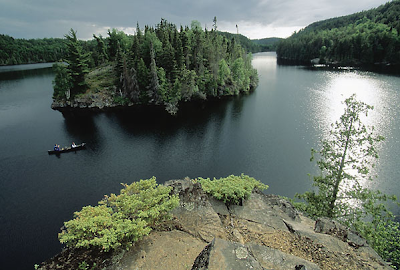You may have thought to yourself so where does
all the excess water go? We all know that it does not just sit on the surface
but instead it filtrates into the ground because it is a
permeable surface. Ground water is the water that sits below the surface of the
land and that fills in the spaces between the rock and sediment. When talking
about how groundwater can be stored, there are two terms to know, porosity and
permeability. Porosity is how the groundwater stores itself in between the rock
grains, if there is a lot of space that means the ground has good porosity.
Permeability is how well the pathways connect the pores to one another; if the
pores are well connected it means that the ground has good permeability.

http://www.co2crc.com.au/imagelibrary2/storage.html
An example of good porosity
http://www.co2crc.com.au/imagelibrary2/storage.html
An example of good permeability
Today in our country we
are having problems keeping the groundwater at a sufficient level. If we take
more groundwater than the system is able to replenish itself, the process is
called drawdown. The process of groundwater replenishing itself with
precipitation penetrating the surface of the ground is called recharge. In most
places of the world the levels of drawdown are greater than the levels of
recharge when we need to attempt to keep the two levels at equilibrium.
Groundwater occurs everywhere in the state of Minnesota. On average,
Minnesota's groundwater provides about 75% of the state's drinking water and
90% of the state's agricultural irrigation water.
This map shows us how many centimeters per year of groundwater recharges back into the system
So now you may be wondering so where does all of the excess
water flow to? The answer is a drainage basin which is also known as a watershed. A
watershed is a body of water that all of the excess groundwater, precipitation
and overflow drain into. Another component of a watershed is observing all of
the rivers and streams in a particular area and seeing where they drain into.
In Northern Minnesota the two main basins are the Red River of the North and
the Rainy River Basin. So all of the little streams and rivers, which are
called tributaries, groundwater, overflow and excess precipitation end up flowing
into these two particular rivers.
http://www.30lakes.org/Images/basinsMN.jpg
This map explains to us all of the major watersheds in the state of Minnesota.
I hope this blog helped you understand a few of the main concepts of Hydrology and how they apply to Northern Minnesota!!!!
http://www.flickriver.com/photos/postndakota/227926099/
Sources:
http://www.dnr.state.mn.us/groundwater/index.html
http://www.co2crc.com.au/imagelibrary2/storage.html
http://clasfaculty.ucdenver.edu/callen/1202/Battle/Destroy/Hydrology/HydrologyBasics.html
http://blog.gmedical.com/Locums-for-a-Small-World/bid/34958/Minnesota-Land-of-lakes-loons-and-locum-tenens
http://pubs.usgs.gov/fs/2007/3007/
http://www.30lakes.org/Images/basinsMN.jpg
|








No comments:
Post a Comment